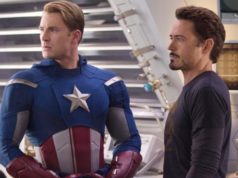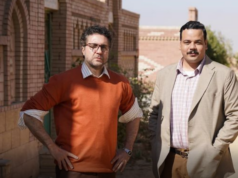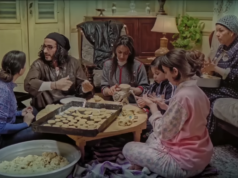“You can’t say civilizations don’t advance… for in every war they kill you in a new way” Will Rogers
First we had to eat and the desire for survival made us fight for the resources. But as human societies evolved and resources became a controllable variable- we fought to control these resources. Power and power struggles have been at the core of the human society, even at its earliest and most primitive forms. We created tools to hunt for food then shortly afterwards turned them into weapons to kill fellow humans; and weapons evolved just as every aspect of our lives did. Weapons transformed from the sharp tools in the Stone Age to the horrors of the Nuclear Age. These inventions shaped warfare and painted the most hideous episodes of our history.
1- Fortification Building
In prehistoric times, fighting relied on ambushing your target, this until people settled and found ways to fortify their settlements. Fortification was introduced by the sedentary farmers of the nascent civilizations who started accumulating resources beyond their bare necessities. The use of stone and mud replaced wood in building and was the foundation for fortified communities, and eventually city-states. One of the earliest evidence of fortification is found in the ancient city of Uruk, on the Euphrates 2900 BCE. Fortification inspired centuries of siege engineering.
2- The Wooden Chariot
The wooden chariots were labelled the “super weapons” of the ancient world. With two spoked wheels at the back and two or four horses at the fore, the chariot dashed with unprecedented speed creating horror within the enemies’ lines. The wooden chariot was first evident in the Levant in the 1700 BCE. It was used intensively for centuries, but its sudden demise in 1200 BCE has left historians with much to speculate.
3- The Stirrup
While the Romans excelled at siege engineering, the dynamics of warfare remained largely the same until the Middles Ages – the age of knights and horses too. The stirrup arrived in Europe in the 8th century, giving the knight stability on the horse and rendering his blows (with the lance or sword) more efficient than ever in the battle field. This simple frame that hangs from the saddle to hold the rider’s feet has had massive effect on the use of cavalry in warfare, and probably contributed the flow of literature that revolved around knighthood.
4- The Gunpowder Revolution
This is not only an important warfare technology, it is one of the most crucial inventions in history since its use instigated changes beyond the battlefield. First, this invention devastated the entire feudal order in Europe – skilled knights and fortified castles were easily brought down by the firing of canons. A social shift took place as a result – the commoners rose by virtue of their ability to fire in battles and the nobility slowly dismantled as they lost their military supremacy. The death toll increased significantly in both land and naval warfare after gunpowder, but it its revolutionary effect did not end there. With gunpowder, ‘killing’ became an indifferent matter and an easier task. In land battles, it created a new cycle for the infantry, but one in which killing lacked the honor and courage of the previous centuries. At sea, it unleashed an era of piracy and its presence would enable air warfare a few centuries later. More importantly, gunpowder marked the beginning of ‘chemical power’ in warfare. As Alex Roland put it, “the scale of death and destruction unleashed by war through the remainder of the second millennium CE beggars the human imagination.” Gunpowder first appeared in Europe 1241 and was soon to become the weapon that empowered imperialism.
5- Tanks
Tanks were the chariots of modern warfare. By the beginning of the 20thcentury, both the French and the English possessed sophisticated automobile industries and competed to invent an armored fighting vehicle.The tank was inspired by the agricultural tractors, only it was a vehicle that incorporated “armor, firepower, an all-terrain mobility.” The first tank appeared in 1915 in Britain as a ‘Landship’. The French followed shortly and in 1917, the first French tanks appearing on the scene were Renaults. Tanks were first employed in the battlefield during WWI at the battle of Flers-Courcelette, in which the Anglo-French front engaged with the Russians. The model was not mature yet and many broke down, hence initially their results were minimal. However, in the following decades the tank proved to be a forceful weapon as it crossed trenches, infiltrated barbed wire, dispersed infantry and resisted high explosive artillery.
6- The Airplane
The gift of flight altered our world forever, but with a greater opportunity to travel and explore, came equal destruction options. Air warfare first took place in WWI. At the time, these tentative crafts were used mainly for observation and an exchange of fire amongst each other, but by WWII their destruction was full-fledged. Military aircrafts were directed at key targets and resulted in significant civilian causality. Advanced aerodynamics and efforts especially devoted towards engineering more intricate fighter aircrafts have rendered the airplane, the ‘most important weapon of modern warfare since WWII’. Its development inspired other technologies x like the shortwave and long-wave radars, computer networks and long-range navigation systems for more ‘precision bombing’ into being. For historians, WWII was groundbreaking in the history of warfare as it utilized the industrial revolution like no other, and was able to bring much technological inventions to the battlefield.
7- The Nuclear Age
Finally, humans have invented what could potentially end the human community altogether and life on earth as we know it. First used in the aftermath of WWII, the repercussions of the atomic bomb proved to be detrimental, and hence it silently put a halt on interstate wars. Since WWI, the world only witnessed rebellions, insurrections and civil wars. As Alex Roland put it, “a taboo against nuclear war settled on the human community.” It was an invention that forced world peace to some extent, but we all observe anxiously and only speculate the inconceivable repercussions if the taboo were to be broken and another world war would take place.
8- Social Media
The last decade has witnessed a boost in platforms for social interaction and exchange of information. But social media quickly proved to be a double-edged sword. In some cases, it exposes injustices and in others it can result in them. Distorted information and altered footage can direct thought, feed hate and result in outbursts of violence against certain groups. The fact is that its impact is significant and has already proven its ability to mobilize masses, instigate rebellions, and even civil wars. Social media can possibly be a weapon as deadly as some of those mentioned above.
Weaponry reshaped like everything in our lives did. Technological advancements facilitated many aspects of our lives – and equally our death. Every age developed means for more efficient and indifferent killing. Warfare history is a fascinating insight into the darker parts of human ingenuousness. Our urge to control resources has taken us all the way to potentially destroy the very source of those resources and our lives along. What the world needs today are not more military inventions, but minds that can create peace and speak wisdom.



















